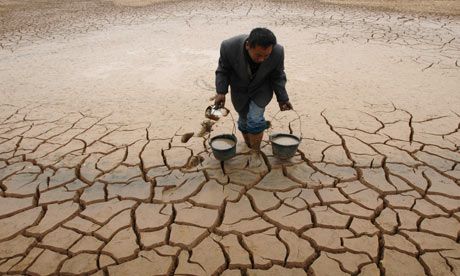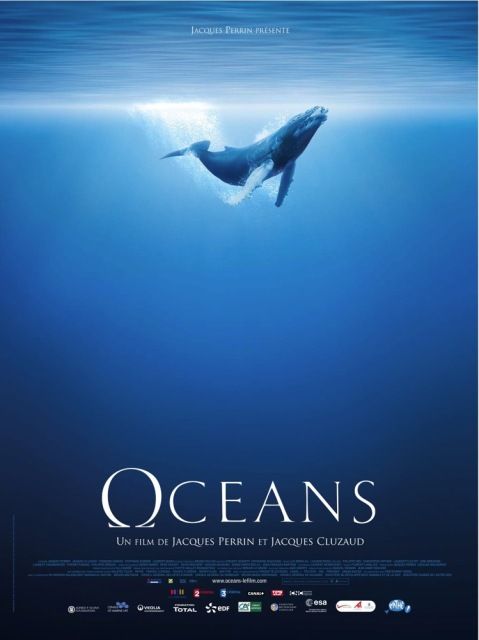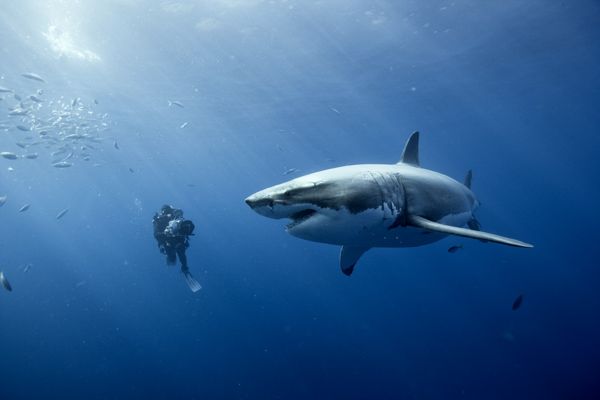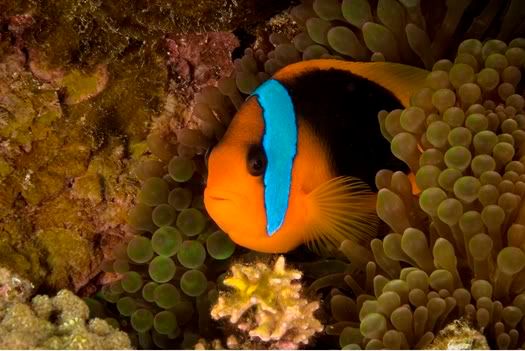“The wars of the 21st Century will be fought over water.” —Ismail Serageldin, World Bank

Watching the devastation and havoc caused by Hurricane Sandy and several recent water-related natural disasters, it’s hard to imagine that global water shortages represent an environmental crisis on par with climate change. But if current water usage habits do not abate, or if major technological advances to help recycle clean water are not implemented, this is precisely the scenario we are facing—a majority of 21st Century conflicts being fought over water. From the producers of socially-conscious films An Inconvenient Truth and Food, Inc., Last Call at the Oasis is a timely documentary that chronicles current challenges in worldwide water supply, outlines the variables that contribute to chronic shortages and interviews leading environmental scientists and activists about the ramifications of chemical contamination in drinking water. More than just an environmental polemic, Last Call is a stirring call to action for engineering and technology solutions to a decidedly solvable problem. A ScriptPhD.com review under the “continue reading” cut.

Although the Earth is composed of 70% water, only 0.7% (or 1% of the total supply) of it is fresh and potable, which presents a considerable resource challenge for a growing population expected to hit 9 billion people in 2050. In a profile series of some of the world’s most populous metropolises, Last Call vividly demonstrates that stark imagery of shortage crises is no longer confined to third world countries or women traveling miles with a precious gallon of water perched on their heads. The Aral Sea, a critical climate buffer for Russia and surrounding Central Asia neighbors, is one-half its original size and devoid of fish. The worst global droughts in a millennium have increased food prices 10% and raised a very real prospect of food riots. Urban water shortages, such as an epic 2008 shortage that forced Barcelona to import emergency water, will be far more common. The United States, by far the biggest consumer of water in the world, could also face the biggest impact. Lake Mead, the biggest supplier of water in America and a portal to the electricity-generating Hoover Dam, is only 40% full. Hoover Dam, which stops generating electricity when water levels are at 1050 feet, faces that daunting prospect in less than 4 years!
One strength of Last Call is that it is framed around a fairly uniform and well-substantiated hypothesis: water shortage is directly related to profligate, unsustainable water usage. Some usage, such as the 80% that is devoted to agriculture and food production, will merit evaluation for future conservation methods. California and Australia, two agricultural behemoths half a world apart, both face similar threats to their industries. But others, such as watering lawns. are unnecessary habits that can be reduced or eliminated. Toilets, most of which still flush 6 gallons in a single use, are the single biggest user of water in our homes—6 billion gallons per day! The US is also the largest consumer of bottled water in the world, with $11 billion in sales, even though bottled water, unlike municipal tap water, is under the jurisdiction of the FDA, not the EPA. As chronicled in the documentary Tapped, 45% of all bottled water starts off as tapped water, and has been subject to over 100 recalls for contamination.

A cohort of science and environmental experts bolsters Last Call’s message with the latest scientific research in the area. NASA scientists at the Jet Propulsion Laboratory are using a program called the Gravity Recovery and Climate Experiment (GRACE) Satellite to measure the change in oceans, including water depletion, rise in sea levels and circulation through a series of gravity maps. Erin Brockovich, famously portrayed by Julia Roberts in the eponymous film, appears throughout the documentary to discuss still-ongoing issues with water contamination, corporate pollution and lack of EPA regulation. UC Berkeley marine biologist Tyrone Hayes expounds on what we can learn from genetic irregularities in amphibians found in contaminated habitats.
Take a look at a trailer for Last Call at the Oasis:
Indeed, chemical contamination is the only issue that supersedes overuse as a threat to our water supply. Drugs, antibiotics and other chemicals, which cannot be treated at sewage treatment plants, are increasingly finding their way into the water supply, many of them at the hands of large corporations. Between 2004 and 2009, there were one half a million violations of the Clean Water Act. Last Call doesn’t spare the eye-opening details that will make you think twice when you take a sip of water. Atrazine, for example, is the best-selling pesticide in the world, and the most-used on the US corn supply. Unfortunately, it has also been associated with breast cancer and altered testosterone levels in sea life, and is being investigated for safety by the EPA, with a decision expected in 2013. More disturbing is the contamination from concentrated animal feeding operations (CAFOs) near major rivers and lakes. Tons of manure from cows, one of which contributes the waste of 23 humans, is dumped into artificial lagoons that then seep into interconnected groundwater supplies.

It’s not all doom and gloom with this documentary, however. Unlike other polemics in its genre, Last Call doesn’t simply outline the crisis, it also offers implementable solutions and a challenge for an entire generation of engineers and scientists. At the top of the list is a greater scrutiny of polluters and the pollutants they release into the water supply without impunity. But solutions such as recycling sewage water, which has made Singapore a global model for water technology and reuse, are at our fingertips, if developed and marketed properly. The city of Los Angeles has already announced plans to recycle 4.9 billion gallons of waste water by 2019. Last Call is an effective final call to save a fast-dwindling resource through science, innovation and conservation.
Last Call at the Oasis went out on DVD November 6th.
~*ScriptPhD*~
*****************
ScriptPhD.com covers science and technology in entertainment, media and advertising. Hire our consulting company for creative content development.
Subscribe to free email notifications of new posts on our home page.
]]>
Happy Earth Week 2010, everyone! Here at ScriptPhD.com, we have devoted a number of articles to environment, sustainability and eco-awareness as part
of our continuing “It’s Not Easy Being Green” series. This year, in celebration of the 40th anniversary of Earth Day, we are devoting the entire week to articles, interviews and profiles of companies, individuals and content that raises awareness of sustainability efforts and new ideas for the green science revolution. Because water lies at the heart of most modern environmental crises, we kick off Earth Week with CaptainPlanet’s review of the stellar new DisneyNature documentary Oceans, a truly spectacular oeuvre that celebrates the majesty of our most important and delicate resource. We also include a number of practical, easy things you can do right now to make a difference globally by acting locally. For our Oceans review and to find out what you can do to help protect our Earth’s water supply, please click
the “continue reading” cut.
When I was three years old, my parents took me on a vacation to Atlantic City. It was my first time ever to see the ocean, and my parents were excited to see my reaction at seeing the water when we arrived at the beach that morning. Although I don’t remember the experience, I’ve been told that when I first set foot on the beach, I had a very concerned look on my face when I saw the waves pounding the shore. I ventured closer to the water to get a closer look, and upon surveying the incoming waves, I promptly turned on a dime and outran my parents back to the hotel without stopping. When my parents finally caught up with me to find out the reason for my distress, I said, “the river came out of itself,” in awestruck horror at the ocean’s power.

Oceans, a DisneyNature documentary premiering in theatres on Earth Day, April 22, 2010, opens on a similar theme of childhood wonder as a little boy on a beach stares out at the vastness of the ocean before him and wonders what an ocean is. As children, before we learn names for what things are called, and prior to learning about taxonomical categories in biology courses, staring at an ocean and all of its inhabitants is truly an exercise in wonder. Oceans ignites that childlike wonder while exploring the richness, beauty, danger and primordial nature of the sea. Directors Jacques Perrin and Jacques Cluzaud clearly have a knack for inciting wonder. Perrin directed the acclaimed The Winged Migration in 2001 and Cluzaud’s resume features work in IMAX films and innovative projection techniques.
Disney launched the DisneyNature label after the worldwide success of March of the Penguins in 2004. Their mission is to release one nature-related documentary per year to raise awareness about the interconnectedness of humans and nature, including what actions we can take to positively impact the environment. It is promising to see a global media corporation as hefty as Disney champion sustainability in a serious way. And it will be clear to anyone who sees Oceans, a top-notch production with stunning cinematography, narration and musical score, that Disney spared no expense to produce this film.
Pierce Brosnan, the film’s narrator, seems to have found a daft second career in narration, starting with his excellent work on the pre-recorded audio tour of the 2006 Magritte exhibit at the Los Angeles County Museum of Art. Brosnan’s voice, retaining the suaveness of his 007 days, guides us on a journey through waters of the globe. It seems at times as though the film has managed to capture every single creature that inhabits the oceans, as impossible as that would be. From whales, dolphins, sharks, sea lions, polar bears, otters, fish, crabs, shrimp, plankton, turtles, to penguins, octopi, jellyfish, and many more, it’s easy to forget just how many members of the animal and plant kingdom reside
in the oceans.

In one of the film’s most breathtaking sequences, we witness a school of sardines massacred from above and below by an army of birds, dolphins, sharks and blue whales. The sequence is an orgiastic feeding frenzy, shot from above, on the surface and underwater, accompanied by a kinetic musical score. The different animals in this sequence appear so choreographed that they invoke the ballet of dancing hippos, ostriches and alligators from the “Dance of the Hours” sequence from Disney’s animated Fantasia masterpiece. The sequence ends with a blue whale breaching the surface in the center of concentric rings of dolphins, fish and birds, a prima ballerina taking her bow.
Oceans is primarily a love letter to our world’s oceans, surveying the various topographies and lifeforms of the world beneath the surface that we often take for granted. Fortunately the film doesn’t shy away from discussing the danger that human activity poses to oceans. Although Oceans was never intended to be a hard-hitting piece of environmental journalism, it does strike a good balance between education and advocacy. The film highlights how advances in satellite imagery allow us to see where industrial pollution flows from rivers out into the open ocean, much the same way a calcified artery might appear on a heart scan. In a regular satellite photo, the river appears to be as blue as the ocean, but when the view switches to the new technology, the pollution in the river, heretofore unseen, materializes in the photo as a black, foreboding stream. The oceans have become humanity’s dumping ground for hundreds of millions of tons of trash each year. In another sequence, we see gigantic fishing nets that sweep vast swaths of water, a practice known as trawling, decimating global fish populations and killing other animals unlucky enough to get caught in the vast net. And in Antarctica, we are shown how rising global temperatures have resulted in the demise of the polar ice caps. Though the film doesn’t broach the topic directly, human water consumption is another imminent crisis facing our oceans. In a brilliant editorial, National Geographic Society chairman Gilbert Grosvenor discusses how human water usage is unsustainable and touts a National Geographic issue devoted entirely to water. (Download here.) Towards the end of Oceans, Brosnan boldly (and correctly) states that the greatest threat to the ocean is human indifference. We hope that you attend, absorb and engage in activism, even at the most basic levels to prove him (and all of us) wrong.
Coinciding with the film’s release, Disney has launched a campaign, in partnership with The Nature Conservancy, to create a protected area of coral reef in the Bahamas. Each moviegoer who attends an Oceans screening in the first week of the film’s release will help contribute to the cause. The campaign for the previous DisneyNature release, Earth, resulted in the planting of an astonishing 2.7 million new trees in the Amazon rainforest. The Nature Conservancy, founded in 1951, protects more than 119 million acres of land, 5,000 miles of rivers, and 100 marine conservation projects globally. With a staff of more than 700 scientists, they pursue their goals through science-based, non-confrontational strategies.
Oceans Trailer:
Oceans goes into wide release on Earth Day, April 22, 2010 at theatres nationwide.

•Contact your congressional representatives to voice your support for the Oceans-21 Act: a bill that adopts the key recommendations of the U.S. Commission on Ocean Policy and the Pew Oceans Commission to develop a holistic ocean health plan. This bill, unlike past ocean legislation, treats the disease, not the symptom.
•Educate yourself about the sustainability of seafood. Check out “Bottomfeeder: How to eat ethically in a world of vanishing seafood” by Taras Grescoe.
•Check out the Monterey Bay Aquarium’s guide to seafood
•Volunteer or donate to ocean related organizations. If you live by a coastal area, attend a beach clean-up.
•If going on a cruise, choose an environmentally friendly cruise line
•Support elected officials who support the ocean.
•Keep trash out of the oceans—if you don’t already, recycle, reduce, reuse and compost as much of your waste in your home and office as possible. Earth911.com is an exceptional resource for tips on recycling, finding ways to be greener, reduce waste, and purchase products made of recycled materials.
•Have more ideas for us? We’d love to hear about them in our comments section.
CaptainPlanet is an LA-based, Northwestern University-educated, eco-charged sustainability guru who loves film, psychology and saving the planet, one waterless urinal at a time…
~*CaptainPlanet*~
*****************
ScriptPhD.com covers science and technology in entertainment, media and advertising. Hire our consulting company for creative content development.
Follow us on Twitter and our Facebook fan page. Subscribe to free email notifications of new posts on our home page.
]]>
